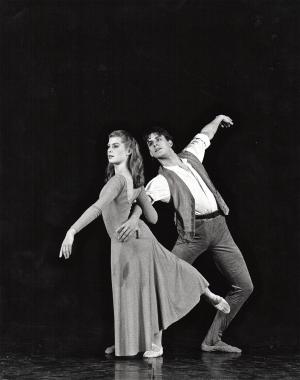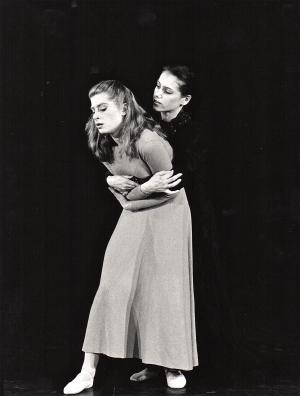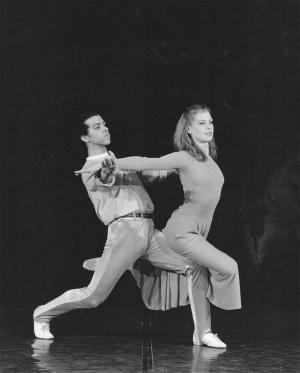No Language but a Cry (1989)
Duration: 9’
For piano and pre-recorded track
Choreography: Michael Pink
Lighting Design: Mark Grabiec
First performed as part of the 1989 Ballet Central National tour.
The final part of the Family Picture trilogy, No Language but a Cry can be seen as the daughter’s story – it is a compelling and moving story of a lonely woman looking back over her life.
The format follows that of the other pieces in the trilogy. The opening establishes the feeling of the piece, in this case with an evocative harp melody, establishing a key leitmotif. The live piano plays the episodes that comprise the development of the plot, leading to a flashback sequence that builds to the end.
The harp melody, with its tinge of Irish (or perhaps Welsh) melancholy, started life as a plié exercise for a Graham technique contemporary dance class in Rome. The cry, like a moorland bird, is in reality three notes suspended over the quiet melody, originally indicating some sort of Grahamesque contraction. These three notes figure prominently in the rest of the music, permeating all the musical material with the cry motif. This in a very real sense is a proper leitmotif technique, one which not only binds the music together structurally, but helps to infuse the whole piece with the same dramatic quality, in this case sadness and disquiet. This is a technique that Feeney uses in much of his work, most notably and powerfully in the three act ballet, Dracula.
In the days before computers music stations or indeed sequencers, hand-made click tracks on a non-weighted keyboard could be tricky. The multimetric, slightly syncopated accumulation section required a couple of minutes of a low tolling marimba D, which needed to be as metronomic as possible. Everybody had a go, with varying success.
photos courtesy of Ballet Central



